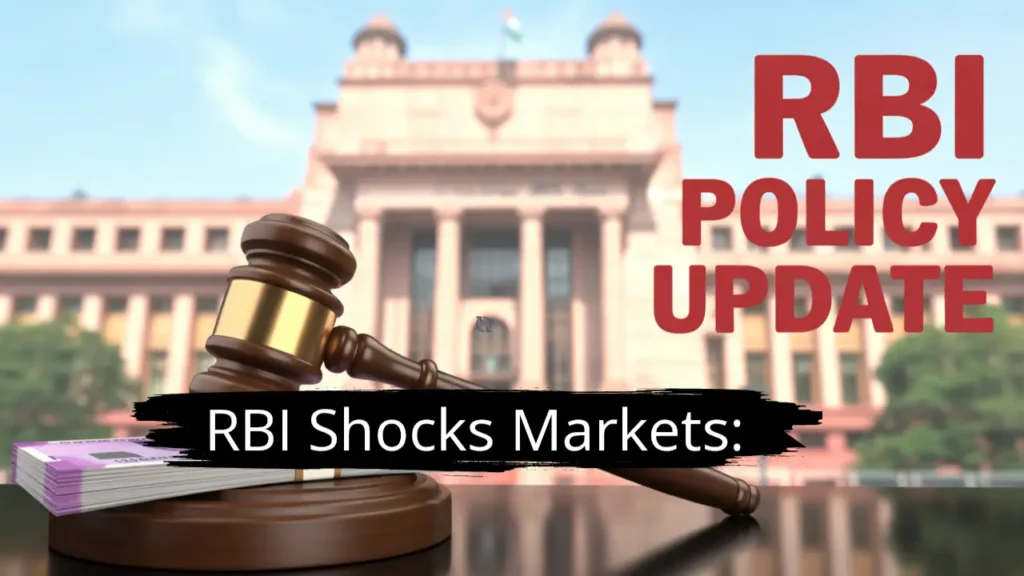The Reserve Bank of India (RBI), in its 55th Monetary Policy Committee (MPC) meeting held from August 4 to 6, 2025, has decided to maintain the benchmark repo rate at 5.50%. This unanimous decision comes under the leadership of RBI Governor Sanjay Malhotra, with the policy stance remaining “Neutral”. The move aligns with market expectations and reflects the central bank’s cautious strategy to monitor the full impact of its earlier rate cuts, which totaled 100 basis points since February this year.

RBI Holds the Line: Key Policy Rates Unchanged
The RBI’s August policy maintained the repo rate at 5.50%, the Standing Deposit Facility (SDF) rate at 5.25%, and both the Marginal Standing Facility (MSF) and Bank Rate at 5.75%. These unchanged rates signal a pause in the easing cycle that began earlier this year.
The central bank believes that the earlier rate cuts need more time to work their way through the economy. “We must ensure that the full effects of our past actions are felt before moving further,” said Governor Sanjay Malhotra. This pause gives breathing space to assess the real impact of reduced interest rates on credit growth, private investment, and consumer demand.
Growth Steady, Inflation Slows
The RBI retained its GDP growth forecast at 6.5% for FY26, breaking it down across quarters as follows:
- Q1: 6.5%
- Q2: 6.7%
- Q3: 6.6%
- Q4: 6.3%
The forecast for Q1 FY27 has been set at 6.6%.
On the inflation front, the outlook has turned even more positive. The RBI revised its FY26 CPI inflation forecast down to 3.1%, from the earlier 3.7%. This optimism is largely due to a sharp drop in food prices, which brought June inflation to just 2.1% — the lowest in six years. However, core inflation remains a concern, hovering above 4% and expected to rise to 4.9% by Q1 FY27.
This mixed picture means the RBI must tread carefully: while headline inflation is low, underlying price pressures remain, especially in services and housing.
Market & Global Reactions: A Mixed Bag
The RBI’s decision had an immediate impact on Indian stock markets. The Sensex dropped over 200 points to close near 80,450, while the Nifty dipped below 24,600, largely due to nervousness in rate-sensitive sectors like banking, real estate, and auto.
More significantly, global risks continue to loom large. The RBI warned of potential economic fallout from:
- A 25% U.S. tariff on Indian exports
- Geopolitical tensions around India’s continued oil imports from Russia, which may invite further sanctions
These external shocks could challenge India’s growth momentum, even as domestic indicators remain healthy.
The Road Ahead: Calibrated Caution
Governor Malhotra emphasized a data-driven, balanced approach going forward. While current inflation levels provide some policy space for further easing, the RBI is in no rush. Future rate cuts—if any—will depend on:
- Sustained low inflation
- Transmission of earlier rate cuts to borrowers
- Global macroeconomic developments
Some economists believe that there’s room for an additional 25–50 basis points of rate cuts by the end of FY26. However, the RBI remains firm on its wait-and-watch strategy, prioritizing economic stability over aggressive easing.
The minutes of the August MPC meeting will be published on 20 August 2025, offering deeper insights into the committee’s deliberations. The next MPC meeting is scheduled for 29 September to 1 October 2025.
Conclusion
In summary, the RBI’s latest move reflects strategic patience—aiming to support growth without risking a flare-up in inflation. By holding the repo rate steady and keeping the policy stance neutral, the central bank is carefully balancing domestic recovery with external uncertainties. Investors, businesses, and borrowers alike now look to upcoming data releases and global signals to better understand what’s next for India’s monetary policy.
F.A.Q.
– What is the current repo rate after the August 2025 RBI policy meeting?
The repo rate remains unchanged at 5.50%, as announced by the RBI on 6 August 2025 during its 55th MPC meeting.
– Why didn’t the RBI cut the repo rate despite low inflation?
Answer: The RBI wants to observe the full impact of its earlier rate cuts totaling 100 basis points since February 2025. It is also keeping a close eye on core inflation and global risks before making further policy changes.
– What is the RBI’s GDP growth forecast for FY26?
The RBI has maintained its GDP growth forecast at 6.5% for FY26, with quarterly projections of 6.5% (Q1), 6.7% (Q2), 6.6% (Q3), and 6.3% (Q4).
– How did the markets react to the RBI’s policy decision?
Following the announcement, the Sensex dropped over 200 points to around 80,450, and the Nifty fell below 24,600, reflecting investor caution in rate-sensitive sectors like banking and real estate.
– When is the next RBI MPC meeting scheduled?
The next Monetary Policy Committee meeting is scheduled for 29 September to 1 October 2025, with the minutes of the current meeting to be published on 20 August 2025.
Also read:-